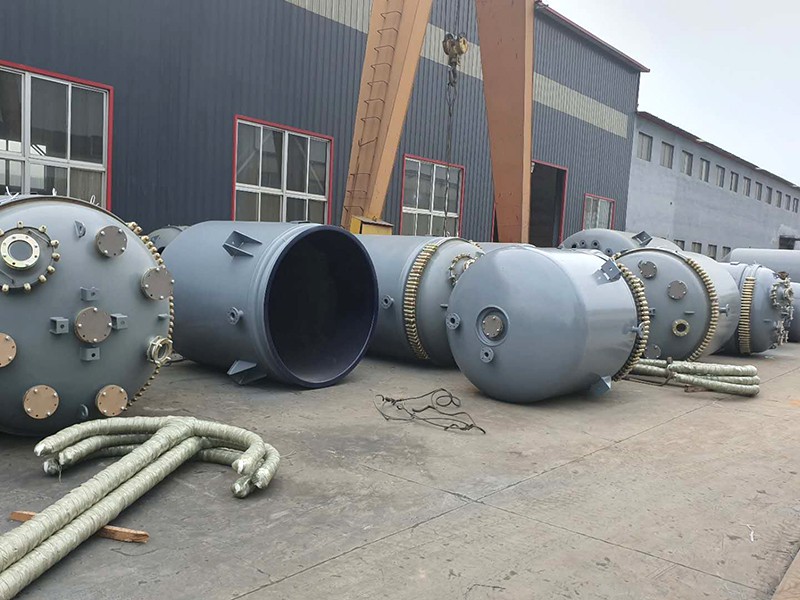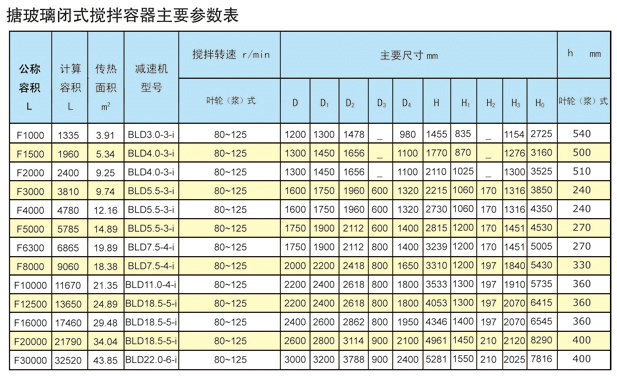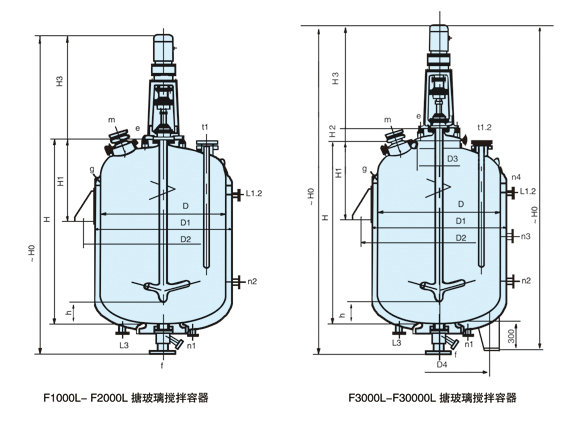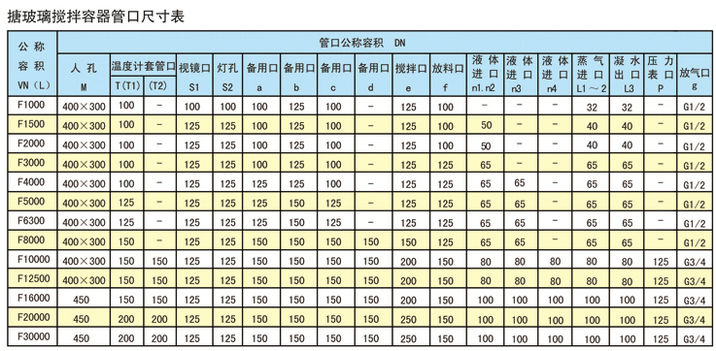The enamel glass reaction tank equipment is a process of lining glass containing high silica on the inner surface of a steel container, and firmly adhering it to the metal surface through high-temperature burning. Commonly used in industries such as petrochemicals, rubber, pesticides, dyes, pharmaceuticals, etc., it is a reaction equipment used to complete processes such as sulfonation, nitration, hydrogenation, alkylation, polymerization, condensation, as well as many other processes for organic dyes and intermediates.
The operating temperature of the enamel glass reaction tank is relatively high, and chemical reactions usually need to be carried out under certain temperature conditions, so the reaction kettle can withstand both pressure and temperature. There are usually several methods to obtain high temperature:
1. Water heating
When the temperature is not high, it can be used, and its heating system has two types: open and closed. Open type is relatively simple, consisting of a circulating pump, a water tank, pipelines, and a regulator for control valves. When high-pressure water is used, the mechanical strength of the equipment is required to be high. A snake tube is welded to the outer surface of the reaction kettle, and there is a gap between the snake tube and the kettle wall, which increases the thermal resistance and reduces the heat transfer effect.

2. Steam heating
When the heating temperature is below 100 ℃, steam under one atmosphere can be used for heating; Within the temperature range of 100-180 ℃, use saturated steam; When the temperature is higher, high-pressure superheated steam can be used.
3. Heating of other media
If the process requires operation at high temperatures or to avoid using high-pressure heating systems, other media can be used instead of water and steam, such as mineral oil (275-300 ℃), diphenyl ether mixture (boiling point 258 ℃), molten salt (140-540 ℃), liquid lead (melting point 327 ℃), etc.
4. Electric heating
Wrap the resistance wire around the insulation layer of the reaction vessel cylinder or install it on a specially designed insulator at a certain distance from the reaction vessel, thus forming a small spatial gap between the resistance wire and the reaction vessel body.
The first three methods of obtaining high temperature all require adding a jacket on the kettle body. Due to the large amplitude of temperature changes, the jacket and shell of the kettle are subjected to temperature changes, resulting in temperature difference pressure. When using electric heating, the equipment is relatively lightweight and simple, the temperature is easy to adjust, and there is no need for pumps, furnaces, chimneys, or other facilities. The operation is also very simple, the risk is not high, and the cost is low. However, the operating cost is higher than other heating methods, and the thermal efficiency is below 85%. Therefore, it is suitable for heating temperatures below 400 ℃ and places with lower electricity prices.










 Address:Room 1202, Detaitang Building, No. 118 Huaguang Road, Zhangdian District, Zibo, Shandong
Address:Room 1202, Detaitang Building, No. 118 Huaguang Road, Zhangdian District, Zibo, Shandong WhatsApp:+8613386433135
WhatsApp:+8613386433135 Tel: +8613386433135
Tel: +8613386433135